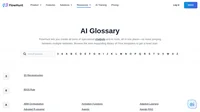Deepfakes are a form of synthetic media where AI is used to generate highly realistic but fake images, videos, or audio recordings. The term “deepfake” is a portmanteau of “deep learning” and “fake,” reflecting the technology’s reliance on advanced machine learning techniques.
Origin and Development
Initially gaining attention in 2017, deepfake technology has swiftly evolved. It leverages deep learning algorithms, particularly Generative Adversarial Networks (GANs), to manipulate or create digital content that is almost indistinguishable from real media.
How Does Deepfake Technology Work?
The Mechanism Behind Deepfakes
Deepfake technology primarily uses Generative Adversarial Networks (GANs), which consist of two neural networks: the generator and the discriminator. The generator creates fake data, while the discriminator evaluates its authenticity. Over time, this adversarial process results in highly realistic synthetic media.
Key Steps in Creating Deepfakes:
- Data Collection: Gathering a large dataset of images, videos, or audio recordings of the target subject.
- Training the Model: Using the dataset to train the GAN, teaching it to produce realistic fake content.
- Generation: The generator creates new, synthetic content that mimics the real data.
- Validation: The discriminator assesses the generated content’s authenticity, refining the generator’s output.
Applications of Deepfake Technology
While deepfakes are often associated with malicious activities, they also have legitimate applications:
- Entertainment: Used in film and video game production to create realistic characters or scenes.
- Customer Support: Employed in call centers for creating realistic virtual agents.
- Education and Training: Used for simulations and training scenarios in various fields, such as medicine and aviation.
Ethical and Societal Implications
Risks and Concerns
The ability of deepfakes to create hyper-realistic fake content poses significant risks:
- Misinformation: Deepfakes can spread false information, influencing public opinion and undermining trust in media.
- Political Manipulation: Potential to interfere in elections and political events by creating fake speeches or endorsements.
- Privacy Violations: Unauthorized creation and distribution of deepfake content can infringe on individuals’ privacy and consent.
Notable Incidents
One of the most alarming examples of deepfake misuse occurred in 2022, when a deepfake video of Ukrainian President Volodymyr Zelenskyy was released, falsely showing him asking his troops to surrender. Such incidents highlight the urgent need for regulatory measures and ethical guidelines.
Detecting and Mitigating Deepfakes
Detection Techniques
Researchers are developing various methods to detect deepfakes, including:
- AI-Based Detection Tools: Algorithms designed to identify inconsistencies and artifacts in synthetic media.
- Blockchain Technology: Using blockchain to verify the authenticity of digital content.
Mitigation Strategies
To combat the misuse of deepfakes, several strategies are being implemented:
- Legislation: Enacting laws to penalize the creation and distribution of malicious deepfakes.
- Public Awareness: Educating the public about the existence and potential dangers of deepfakes.
- Technological Solutions: Developing advanced detection tools and promoting digital literacy.
Further Reading
For more detailed information on related topics, explore the following resources:
- What is Generative AI? Everything You Need to Know
- Top Generative AI Tool Categories for 2024
- Will AI Replace Jobs? 9 Job Types That Might Be Affected
Generate descriptions from Images
Effortlessly generate engaging image descriptions with FlowHunt's API and workflow builder. Enhance author works seamlessly.



